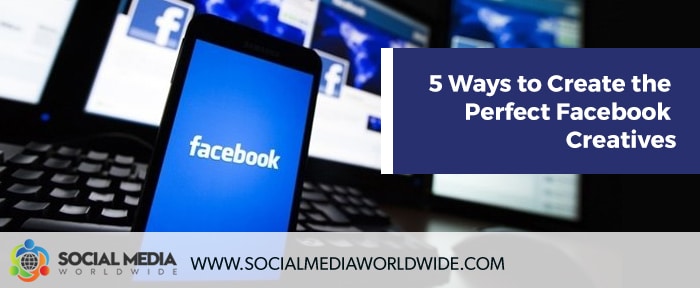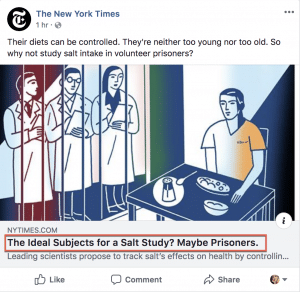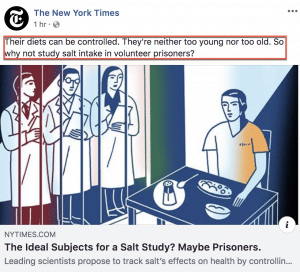What makes a perfect Facebook creative? You’ve tried a few different strategies, and they just aren’t working, so you’d really like to know the answer to this question. It turns out that there are key elements that make a perfect ad that will have users stopping mid-scroll in their News Feeds.
Although there are various elements to consider when putting together your Facebook creative, there are five specific ways that will help you deliver perfect creatives to your audience in no time.
1. Use Listicle Headlines (For Article Posts)
When you’re looking at your ad, the headline is the first row of text that appears directly below your ad’s main visual. They must clearly and succinctly summarize the content users will read about after clicking on your ad. The best structure for a headline is the listicle format because it generates more clicks. Listicle headlines are structured as follows: Number + Noun + Personal Pronoun + Modal. For example: “7 Ways You Can Improve Your Campaign and How to Do it”
Listicle headlines are effective because numbers attract the eye and preview what users can expect to learn by clicking your ad, personal pronouns directly call to the user, and modals, such as “should” and “can,” urge users to take action.
2. Use Video Over Static Images
They say a picture is worth a thousand words. Imagine how many words a video is worth. Static images may be more appropriate for certain campaigns, but video is more interesting and pulls the viewer in (when done well). Video is changing the way consumers shop, according to current research, guiding them through their path to purchase and helping them make the decision to buy. High-quality demo videos, which show a product or service being used, are particularly popular and effective. The best videos uniquely convey your main message within the first few seconds, so viewers don’t have to sit through your entire video to get to the point.
To make a great Facebook video ad, you should keep in mind these four tips:
- Capture your audience’s attention from the get-go.
- Keep it simple.
- Use captions so viewers can get the message with or without sound.
- Play with size and dimensions.
3. Keep Your Post Text Between 20 to 75 Words
Your post text appears above your ad. In-depth analyses show post text lengths of 20 to 75 words garner the best reach, meaning the ad will be seen by more users.
Do you want post text that falls on the shorter end of that range, or should it be closer to the 75-word mark? To help you decide which length (longer or shorter) is best for your ad creative, here are basic guidelines to follow (for post text, headline, description, and caption copy):
Use long copies when…
- You’re advertising a service.
- You’re targeting an older audience.
- The creative you’re working with doesn’t elaborate on the product or service you’re advertising.
Use short copies when…
- You’re advertising a product.
- You’re targeting a younger audience.
- The creative you’re working with already elaborates on the product or service you’re advertising.
4. Offer a Solution to a Problem
Every ad should explain how your product or service helps your audience solve an everyday problem. For example, MyPillow offers the solution of a great night’s sleep you get from their pillows to the common problem of sleep interrupted by an uncomfortable pillow.
There are eight questions you should be able to answer about the before and after experience surrounding your product or service:
- Questions 1 & 2: What does your prospect have before purchasing your product or service? What does your prospect have after purchasing your product or service?
- Questions 3 & 4: How does your prospect feel before purchasing your product or service? How does your prospect feel after purchasing your product or service?
- Questions 5 & 6: What is an average day like for your prospect before purchasing your product or service? What is an average day like for your prospect after purchasing your product or service?
- Questions 7 & 8: What is your prospect’s status before purchasing your product or service? What is your prospect’s status after purchasing your product or service?
Using heavy-duty razors for women as an example, here are potential ways to answer these eight questions:
- Questions 1 & 2: What does your prospective customer have before purchasing your product or service? What does your prospect have after purchasing your product or service?
- My prospective customers have hairy legs or skin irritation before purchasing my product.
- My prospective customers have smooth, cleanly-shaven legs after purchasing my product.
- Questions 3 & 4: How does your prospect feel before purchasing your product or service? How does your prospect feel after purchasing your product or service?
- My prospective customers feel uncomfortable and self-conscious before purchasing my product.
- My prospective customers feel confident after purchasing my product.
- Questions 5 & 6: What is an average day like for your prospect before purchasing your product or service? What is an average day like for your prospect after purchasing your product or service?
- My prospective customers’ average days involve spending a lot of money on razors and shaving products before purchasing my product.
- My prospective customers’ average days involve saving their money and showing off their silky-smooth legs after purchasing my product.
- Questions 7 & 8: What is your prospect’s status before purchasing your product or service? What is your prospect’s status after purchasing your product or service?
- My prospective customers’ status is self-conscious twenty-year-old before purchasing my product.
- My prospective customers’ status is sexy, confident twenty-year-old after purchasing my product.
5. Use Relevant Content
Your audience will have no interest in your ad if it isn’t relevant to them. When putting together your creative, you should have a clear understanding of who your audience is and what they want to see. For example, if your key audience is experienced musicians, you wouldn’t want to show them an ad about children playing your brand’s guitar. Or if you’re a meal delivery business, your ads about family dinner time may not be relevant to an audience of single professionals who live alone.
Conclusion
When it comes to building Facebook creatives, it may be tempting to throw something together and see if it works. But putting together the perfect Facebook creative takes a lot of careful thought, testing, and inclusion of influential elements such as those discussed in this article. A creative campaign is a good one. A thoughtfully and creatively planned campaign is a great one.
Anna Hubbel is a staff writer at AdvertiseMint, a Facebook advertising agency






Recent Comments